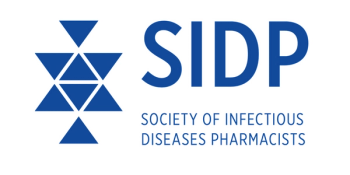
Two New Zika Virus Studies You Need to Know
More information continues to be revealed about the Zika virus as research on a vaccine continues to advance as well.
More information continues to be revealed about the Zika virus as research on a vaccine continues to advance as well. To this end, Penn Medicine investigators recently announced that they have engineered a synthetic DNA-based Zika vaccine able to safely and effectively induce an immune response against the virus, as investigators from the London School of Hygiene & Tropical Medicine have discovered that surveillance for adverse pregnancy outcomes after a Zika outbreak may need to be longer than initially thought.
In the case of the Zika vaccine, investigators from the Perelman School of Medicine at the University of Pennsylvania, in partnership with investigators from the Wistar Institute, Inovio Pharmaceuticals, and GeneOne Life Science, Inc, recently conducted a phase 1 clinical trial that showed “for the first time that humans who received up to 3 doses of a vaccine candidate produced an immune response against Zika with minimal adverse effects, opening the door to further clinical trials for this important vaccine candidate,” according to an
For the phase 1 trial, the teams enrolled a total of 40 participants between August 2016 and September 2016. The participants were divided into 2 groups of 20 participants each, and they received, according to the press release, “1 or 2-milligram doses of the vaccine candidate intradermally at 0, 4, and 12 weeks.” Following each dose, participants were given “small electric currents into the skin at the site of injection, known as electroporation (EP), to facilitate optimal vaccine uptake, production of the intended antigen, and immune responses.”
The results showed that 2 weeks after receiving the third and final dose of the vaccine, 100% of the participants developed Zika-specific antibodies and 80% developed significant neutralizing antibodies against the virus. The investigators also discovered that serum taken from the participants and injected into infected immunocompromised mice protected the mice from developing disease. This indicates that the antibodies induced by the vaccine can prevent infection and disease in vivo.
This discovery is another step toward combatting a virus that can cause
For example, the results of an upcoming
According to the investigators in the EID study, surveillance for adverse pregnancy outcomes should begin the moment an outbreak is detected and should continue for 40 weeks after the outbreak is deemed over. In addition, the investigators found evidence that suggests that although the most severe adverse pregnancy outcome, microcephaly, is thought to occur only in the first-trimester infection of the virus, evidence suggests that after symptomatic infection in the mother, the
The investigators looked at data from 134 pregnant women who had presented with a rash and tested positive for the Zika virus. A total of 9 women were lost to follow-up and so the investigators were left with a cohort of 125 women, whom they followed throughout their pregnancy. A total of 58 adverse pregnancy outcomes were observed among the infants who survived. Microcephaly was observed in only 4 infants but was severe.
The investigators used mathematical modeling to “estimate the proportion of adverse pregnancy outcomes after symptomatic Zika virus infection at each week of gestation [in the women],” according to the study and then matched this estimate to the actual outcomes observed during and after the 2015-2016 Zika epidemic in 9 regions of Brazil.
What the researchers found was that instead of seeing the outcomes expected with first-trimester infection leading to microcephaly, that, in fact, the risk profile more closely matched models proposing elevated risk at all stages of gestation.
The investigators admit their study has several limitations, including the fact that they only examined a cohort of women who displayed a symptomatic infection with a rash, something that does not occur with all Zika virus infections. In addition, participants were only recruited from Rio de Janeiro, instead of all regions of Brazil, and, the “publicly available epidemiologic reports from Brazil recorded microcephaly cases, rather than all forms of adverse pregnancy outcomes,” according to the study.
Regardless, the authors feel that the results of their study suggest that, “when Zika outbreaks are identified, surveillance and planning for infection-associated APOs might need to focus on a longer period than previously thought.” They caution that the risk begins soon after the outbreak is detected, and further studies are needed to truly refine the risk of adverse pregnancy outcomes because of a Zika virus infection during gestation.
Newsletter
Stay ahead of emerging infectious disease threats with expert insights and breaking research. Subscribe now to get updates delivered straight to your inbox.




























































































































































































































































































